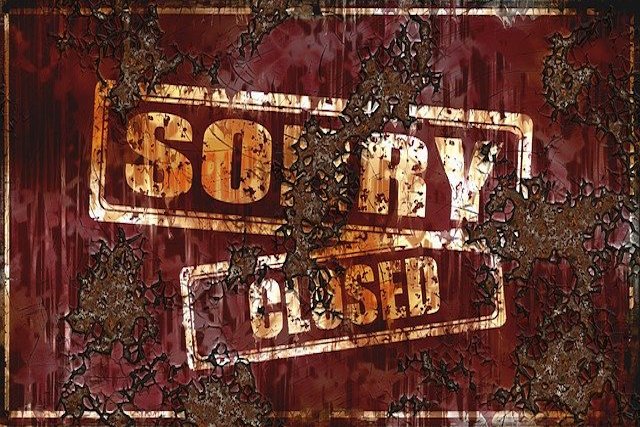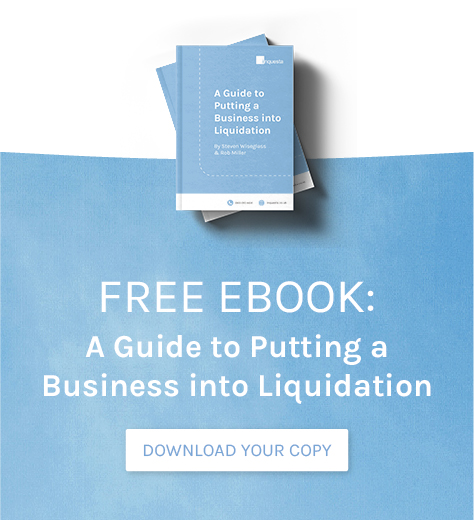If your company has reached the point where you feel it is best to close its doors, you may feel unsure of where to turn. This is especially true if your business has no assets to its name.
Given that company dissolution or Members Voluntary Liquidation (MVL) are not appropriate for liquidating a company with no assets, you are quite limited to what you can do. The good news is though, you do have options.
What is a No Asset Liquidation?
Before we explain the process of liquidating a company with no assets, it’s important to understand how it works. Put simply, it is a way to close down your firm of your own accord, without having to wait for your creditors to do it for you.
It is also possible to perform a no asset liquidation if your firm does not have debts, and you just want to close your business as it is no longer relevant. As mentioned before, it is not suitable for your business to dissolve or use a MVL, given that your firm must be solvent to achieve this.
Therefore, a Creditors Voluntary Liquidation (CVL) is your only real option if your firm is struggling to pay its debts and has no assets to speak of.
How to Liquidate a Company with No Assets
The first thing to consider when it comes to liquidating a company with no assets is whether your firm has debts or not. If your firm has no creditors to worry about, you can simply apply to Companies House to have your business struck off its register. This process typically takes between three to six months, and you will also be required to put together cessation accounts.

If your firm does have debts, there are some essential points to be aware of. Under normal circumstances, a firm will be able to pay off its creditors, and for the liquidation process itself, by liquidating its assets — be they stock, machinery, or property.
Of course, this is not possible if your company has no assets to its name. In this scenario, responsibility for the payment passes on to:
- Company directors
- Shareholders
It is important to note that director’s redundancy payments are not able to be used to pay for this form of liquidation. This means that directors and shareholders will need to do so out of their own pockets.
The process of liquidating a company with no assets begins by the firm passing a winding up resolution. This must be agreed to by 75% (by value) of all shareholders. Companies House must then be informed, and an advert is placed in the Gazette.
A licenced insolvency practitioner is then appointed to deal with the process of closing down the firm. The liquidator will prepare a Statement of Affairs, which is then sent to creditors to invite them to make a claim against the liquidating company.
Once this has been completed, the business is removed from the register at Companies House. At this point, it will no longer be a legal entity. The entire process can take up to 12 months, however it is usually completed earlier than this.
What if I Cannot Afford to Liquidate My Company?
If you are financially unable to pay for a no asset liquidation, you may find that you will have to wait for your creditors to petition to have your firm closed down. This would force you into compulsory liquidation. Going down this route is quite time-consuming, so you may find that the situation drags on a lot longer than it would if you opted for a CVL.
When a company finds itself in this position, the conduct of its directors are put under the microscope to see if the downfall of their firm was due to any untoward actions.

In addition, company directors have a responsibility to know whether their firm is solvent or not — as they can find themselves in real trouble if they continue to trade while insolvent. Business owners must also be sure to put the needs of their creditors first, so it is important that they understand if they need to cease trading immediately, or if they have any leeway to carry on. Making the wrong decision can have extremely serious consequences.
It is therefore essential to seek specialist assistance at your earliest opportunity if you are unable to fund a no asset liquidation yourself. By speaking to an expert, you may be able to find solutions that you were previously unaware of.
Can I Claim Director’s Redundancy?
It may not be widely known, but limited company directors may be able to claim for redundancy if their firm closes down. This is because they will be classified as employees of the business, provided they perform a day-to-day role in the operations of the company, and take a regular salary via Pay As You Earn (PAYE).
Exactly how much you can claim from director’s redundancy will depend on a variety of different factors, such as age, salary taken from the business, and length of service. The average claim amount in the UK stands at around £9,000.
As mentioned above, it is not possible for a director to pay for the MVL process by using director’s redundancy. That being said, it can be used to fund a new business venture, or provide some much-needed security during this financially stressful time.
Why Trust Inquesta with Company Liquidation
If you are thinking about liquidating a company with no assets, you can rely on Inquesta to assist. We are specialists when it comes to helping firms in financial distress, and are dedicated to putting the needs of our clients above all else. Our expert team has worked with businesses from all areas of industry, making us perfectly placed to assist.
We are also licensed insolvency practitioners, meaning we can help take care of the entire process from start to finish — taking all of the stress off your shoulders. There is no hidden agenda with us, so you can be confident you are dealing with a company that has your best interests at heart.
For more information about how Inquesta can assist you, contact a member of our team today or request a free, no obligation, consultation.



